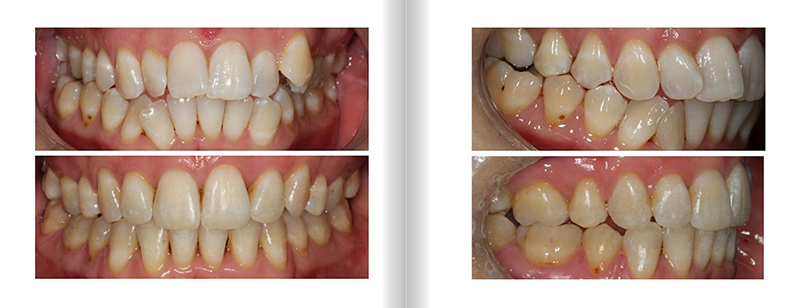

Before and After Dental Bridge
What are dental bridges?
Dental bridges are restorative dental devices used to replace one or more missing teeth, effectively “bridging” the gap they leave behind. Composed of two or more crowns for the teeth on either side of the gap (the anchoring teeth or abutment teeth) and a false tooth/teeth in between, bridges can be made from various materials such as porcelain, gold, alloys, or a combination, offering both functional and aesthetic benefits.
Bridges are recommended for patients looking to restore their smile, improve chewing and speaking functionality, maintain the shape of their face, and prevent remaining teeth from drifting out of position. They provide a durable, less invasive alternative to dental implants and are an effective solution for many who have lost teeth due to decay, gum disease, or injury.
Limited Time Offer!
Grab a FREE orthodontic consultation with Dr. Gaffey.
Special offer has been extended to 25th July 2025!
Call 08 82716233 now!
Benefits of Dental Bridges
Dental bridges offer a reliable solution for replacing missing teeth, blending seamlessly with natural teeth to restore both function and aesthetics. Here are the key benefits of opting for dental bridges:
Restored Smile
Fills gaps, enhancing the appearance and confidence.
Maintained Facial Structure
Prevents facial sagging by supporting facial muscles.
Improved Chewing and Speaking
Bridges help distribute bite forces properly and assist in speaking more clearly.
Prevention of Teeth Misalignment
Stops remaining teeth from shifting, reducing the risk of further oral health issues.
Choosing a dental bridge not only improves the immediate appearance of your smile but also contributes to long-term oral health and comfort. With proper care, dental bridges can last many years, making them a worthwhile investment in your overall well-being and quality of life.




Dental bridge procedure How it works
Dental bridge procedure involves a multi-step process. Initially, the abutment teeth—those on either side of the gap—are prepared by reshaping them to accommodate crowns, which will support the bridge. 3 D Scans with a camera of the teeth are then taken, serving as a virtual model from which the bridge, crowns, and false tooth (or teeth) will be crafted by a dental lab.
A temporary bridge is often placed to protect the exposed teeth and gums while the permanent bridge is being made. Once ready, the temporary bridge is removed, and the new bridge is adjusted to ensure a proper fit during a follow-up visit.
Finally, the bridge is cemented into place, restoring the dental arch’s functionality and appearance. This procedure effectively bridges the gap, offering a durable and aesthetically pleasing solution.


Dental Bridge FAQs
What is a dental bridge?
A dental bridge is a fixed dental restoration used to replace one or more missing teeth by anchoring to the adjacent teeth or dental implants. It consists of two or more crowns for the teeth on either side of the gap and a false tooth/teeth in between.
How long do dental bridges last?
With proper care and maintenance, dental bridges can last 5 to 15 years or even longer. Their longevity depends on the health of the supporting teeth and the overall oral hygiene of the individual.
Are dental bridges noticeable?
No, dental bridges are designed to look like your natural teeth. The materials used, typically porcelain or ceramic, can be matched to the colour of your natural teeth, making the bridge blend seamlessly with your smile.
Can I eat normally with a dental bridge?
Yes, after a short adjustment period, you should be able to eat normally with a dental bridge. However, it’s recommended to start with softer foods and gradually reintroduce harder foods to ensure the bridge’s stability.
How do I care for my dental bridge?
Caring for a dental bridge involves maintaining good oral hygiene practices, such as brushing twice a day, flossing daily (using special flossers designed for bridges), and regular dental check-ups and cleanings. Avoiding hard and sticky foods can also help prolong the life of your bridge.









